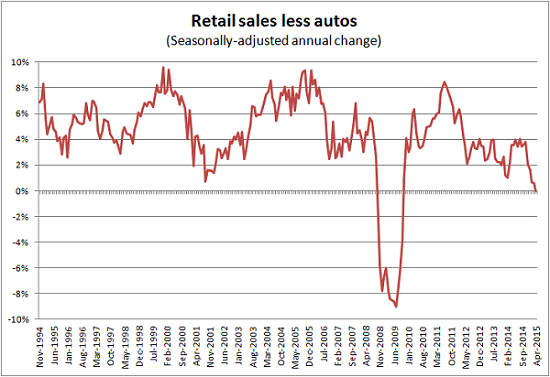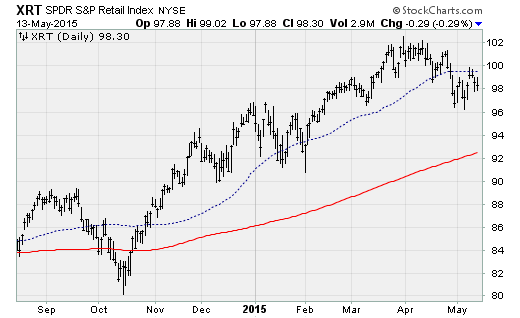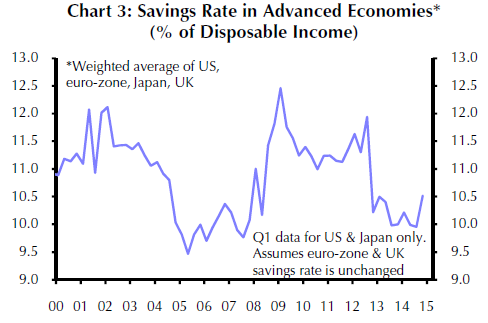What anemic retail sales mean for the Fed
It wasn't supposed to be this way: Wednesday's April retail sales report was a surprising disappointment.
And with that, traders increased their bets the Federal Reserve -- which has been talking up the potential for the first increase in borrowing costs since 2006 as soon as June -- will be forced to delay its interest rate hike until later this year. The Fed fund futures market doesn't expect action until September. Precious metals zipped higher, and the U.S. dollar weakened on anticipation the delay will allow inflation to drift higher.
The spending data missed heightened expectations that the drop in energy prices earlier this year, combined with the ongoing recovery in the job market as the unemployment rate falls, would open wallets and boost the economy out of its tepid first-quarter performance. Instead, April's retail sales less automobiles rose just 0.1 percent over March vs. the 0.5 percent growth that was expected and the 0.7 percent rise for the prior month.
Auto sales were soft, too, but the real surprise was the steep 2.2 percent tumble in department store sales and the 0.4 percent drop in electronics and appliances, the seventh straight decline.
Another shocker comes when you look at the data on an annual basis: Retail sales less autos are actually declining outright on a seasonally adjusted annual basis (chart above) for the first time since the recession was in full swing in 2009. Moreover, the current soft patch in spending is worse than anything that happened in the aftermath of the dot-com bubble bursting in 2001.
To be fair, this chart also reflects the steep fall in gasoline prices. Yet, the fact that consumers aren't shoveling these savings into other purchases reflects a sense of apprehension and perhaps ongoing financial vulnerability that will be cured only by so far elusive wage gains.
Oksana Poltavets at Deutsche Bank believes revisions to the March spending data mean real first-quarter GDP growth is likely to be "significantly weaker" than the initial anemic 0.2 percent estimate. Her forecast of the government's second estimate is running at -1 percent.
IHS Global Insight economist Chris Christopher is looking for retailers to keep a close eye on third-quarter sales as the back-to-school shopping season will set the tone for all-important holiday shopping. Stock market investors aren't waiting to express a vote of no confidence, pushing the S&P Retail SPDR (XRT) further below its 50-day moving average and down about 4 percent from its mid-April high.
What went wrong?
Paul Ashworth at Capital Economics says the retail data challenges the assumption many economists share that weakness in the first quarter was largely weather-related. Deeper issues besides snow appear to be at work. Data from the New York Fed shows that credit card debt declined nearly 3 percent in the first quarter of this year vs. last year's fourth quarter, a sign that consumers used some gas savings to pay off debt. The savings rate is up as well, not just in the U.S. but in other developed economies as well.
Philippa Dunne and Doug Henwood at the Liscio Report analyzed personal consumption spending data and found that changes in spending on energy have only a small impact on changes to nonenergy spending. This means consumers are less influenced by the ups and downs of prices at the corner gas station than many realize.
Instead, the researchers found a much tighter relationship between income growth and spending. "So the 'mystery' of why lower energy prices are not translating into higher retail spending may not be a mystery at all," they explained in a recent note to clients. "The best explanation of tepid retail growth is tepid income growth."
That suggests until wage gains really take off, the Fed will maintain its zero percent interest rate policy. This is exactly what trader of fixed income, currencies and commodities are pricing in.



